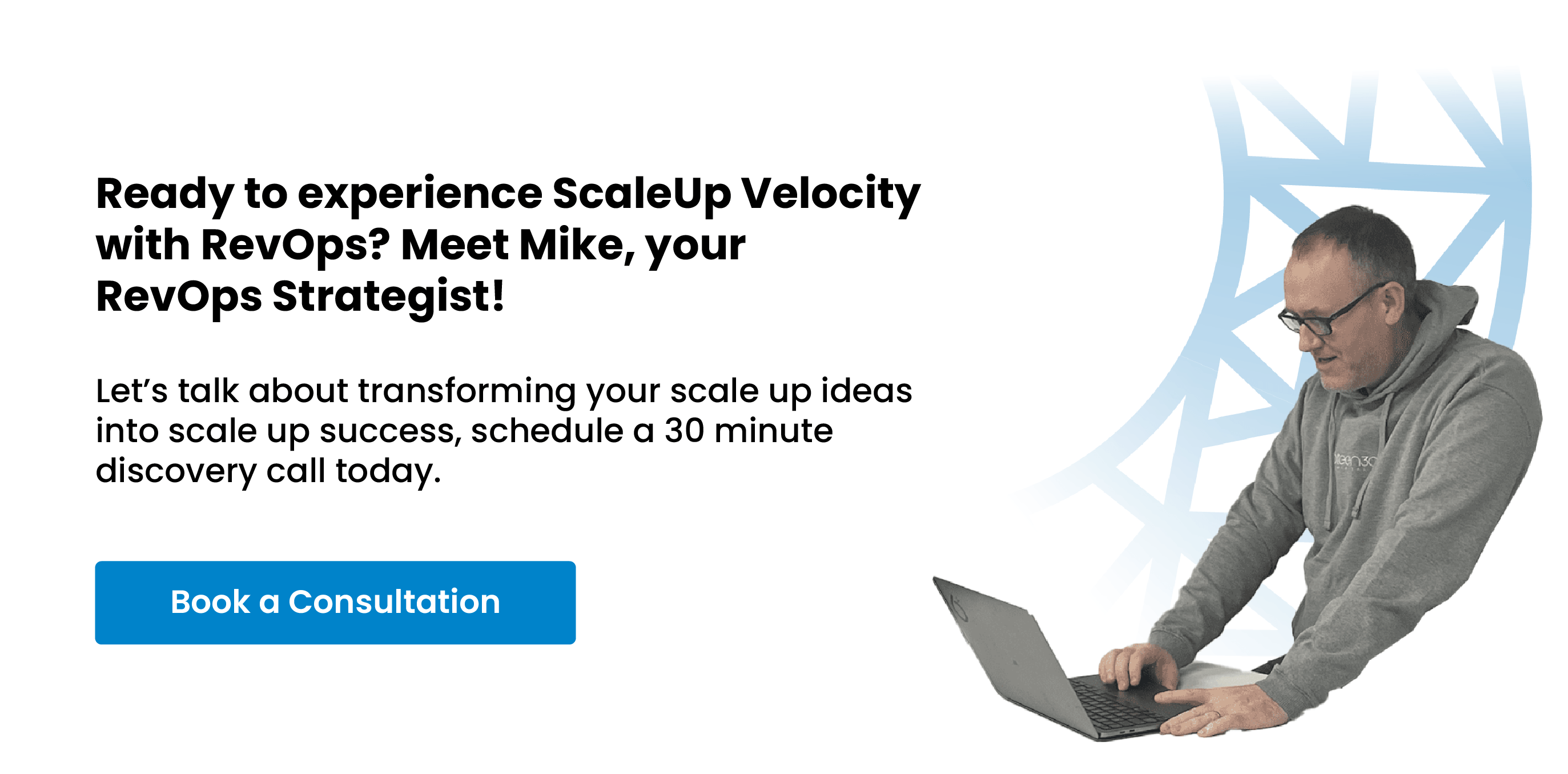RevOps Strategy: Level Up Your Game with SMART Goals and OKRs | #RevOpsLife
Setting goals and tracking progress towards them is essential for achieving success in any area of life. Whether you're running a business, managing a team, or working on personal development, having clear and specific goals can help keep you motivated and focused on what matters most.
And there is no difference when it comes to crafting your RevOps strategy.
In this article, I explore the concept of SMART goals and OKRs (Objectives and Key Results) and how they can help you achieve success.
I’ll break down the components of SMART goals and OKRs and provide practical examples of how to create them for your own goals. My objective is to ensure, you have a better understanding of how to set and track progress towards your goals, and be well on your way to achieving success!
As companies grow and evolve, it can be challenging to keep everyone aligned and focused on the same goals. This is where RevOps comes in. Revenue Operations (RevOps) is a holistic approach to revenue generation that combines sales, marketing, and customer success to drive growth and profitability.
Creating a RevOps strategy that everyone in the organization can understand and work towards is key to its success. One effective way to do this is by setting SMART goals and OKRs.
![]()
In the #RevOpsLife Series, we have already covered the first component of creating a RevOps Strategy, You can read the first article here:
1: Revolutionize Your Revenue: The Power of a Business Model Review
The second component when considering building out your RevOps strategy workshops is to focus on SMART Goals and OKRs, (Objectives and Key Results).
What are SMART Goals?
SMART goals are specific, measurable, achievable, relevant, and time-bound. Each of these components is critical to creating a goal that is effective and actionable.
Why You Need to Start With A Business Model Review:
As it is an essential component of a RevOps strategy, you simply cannot move straight to tactical implementation, nor finalize your Revops strategy without it, for several reasons.
Specific:
Your goals should be specific and clearly defined. Vague or ambiguous goals can lead to confusion and misunderstandings. For example, a vague goal you might discuss is "increase revenue," whereas a specific goal would be:
"increase monthly recurring revenue by 20% in the next quarter."
Measurable:
Your goals should be measurable so that progress can be tracked and evaluated over time. This helps ensure that everyone is working towards the same goal and makes it easier to adjust the strategy if necessary. For example, a measurable goal might be:
"increase website traffic by 25% in the next six months."
Achievable:
Your goals should be challenging, but also realistic and achievable. Setting unrealistic expectations can lead to frustration and disappointment, your team will disengage and feel they are climbing a mountain that can't be conquered, For example, a goal of "double revenue in the next month" may be too ambitious and not achievable, an achievable goal might be:
“Increase revenue by 25% in quarter 1, a further 25% in quarter 2, and by 50% in quarter 3.”
Relevant:
Goals should be relevant to the overall RevOps strategy and aligned with the company's mission and vision. This helps ensure that everyone is working towards the same goal and that the company is moving in the right direction. For example, a goal of "increase social media followers on LinkedIn by 10,000" may not be relevant if the company's target audience is not active on LinkedIn. A relevant goal might be:
“Increase Facebook social media page likes to 10,000 from its current 7,500 by July 31st”
Time-bound:
Goals should have a clear deadline or timeline for completion. This helps keep everyone focused and accountable for achieving the desired outcomes. For example, a time-bound goal might be:
"Launch the new product XYZ at the tradeshow event on 25th February at Boston Convention Center"

What are OKRs?
OKRs (Objectives and Key Results) are a way to set and track progress towards specific goals. They consist of an objective, which is a specific and measurable goal, and key results, which are specific metrics used to track progress towards the objective.
Objectives
Objectives should be specific, measurable, achievable, relevant, and time-bound, just like SMART goals. They should also be aligned with the company's overall mission and vision. For example, an objective might be "increase revenue from new customers by 25% in the next quarter."
Key Results
Key results are specific metrics used to track progress towards the objective. They should be measurable and aligned with the objective. For example, key results for the objective of "increase revenue from new customers by 25% in the next quarter" might be:
"Generate 50 new leads per week"
"Increase conversion rates by 15%," and
"increase average deal size by 10%."

How to Create SMART Goals and OKRs for a RevOps Strategy:
1. Start with the company's mission and vision.
Before setting any goals or objectives, it is important to understand your company's overall mission and vision. This helps ensure that goals and objectives are aligned with your company's long-term strategy and direction.
2. Identify key performance indicators (KPIs).
Identifying KPIs that are relevant to the company's goals and objectives is critical. KPIs should be specific and measurable and should provide insight into the company's performance.
3. Set SMART goals.
Using the SMART framework, set specific, measurable, achievable, relevant, and time-bound goals that align with the company's mission and vision
4. Define objectives
For each SMART goal, define an objective that is specific, measurable, achievable, relevant, and time-bound.
5. Define key results
For each objective, define specific metrics that will be used to track progress towards the objective. These metrics should be measurable and aligned with the objective.
6. Align the goals and objectives across departments
To ensure everyone is working towards the same goals, it is important to align goals and objectives across departments. This helps ensure that everyone is working towards a common goal and that the company is moving in the right direction.
7. Assign ownership
Assign ownership of each goal and objective to specific individuals or teams. This helps ensure accountability and makes it clear who is responsible for achieving each goal.
8. Monitor progress
Regularly monitor progress towards each goal and objective. This helps ensure that everyone is on track and that the strategy is working as intended. Regular progress reports can be a great way to keep everyone informed and engaged.
9. Adjust the strategy as necessary
If progress is not being made towards a goal or objective, it may be necessary to adjust the strategy. This might mean revising the goal or objective, adjusting the key results, or reallocating resources.
10. Celebrate your successes
Finally, it is important to celebrate successes and recognize the hard work and dedication of everyone involved. This helps keep everyone motivated and engaged and can help build a culture of success within the organization.
Conclusion
In every RevOps strategy I write, by incorporating SMART Goals and OKRs into your RevOps strategy ends up being a game-changer for the client.
With the ability to set clear and measurable goals, the management team can better align their teams and drive revenue growth.
By following the steps outlined in this post, you'll be well on your way to creating a winning RevOps strategy.
However, I understand that every business is unique and may require a more personalized approach to its RevOps strategy.
That's why we offer consultation services to help you tailor your strategy to your specific needs through our GamePlan RevOps workshops.
Our team of experts have been creating RevOps strategies since 2016 and have decades of experience in business strategy development, all to help you accelerate your efforts to achieve your goals faster and more efficiently.
Book a consultation with me today and let's get started on creating a winning RevOps strategy together!







%20-%20Teal.png?width=500&height=130&name=Force%20%26%20Friction%20-%20Branding%20-%20Logo%20(White)%20-%20Teal.png)